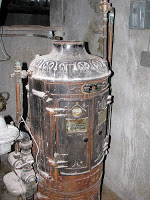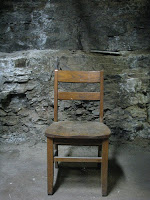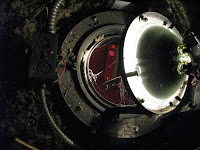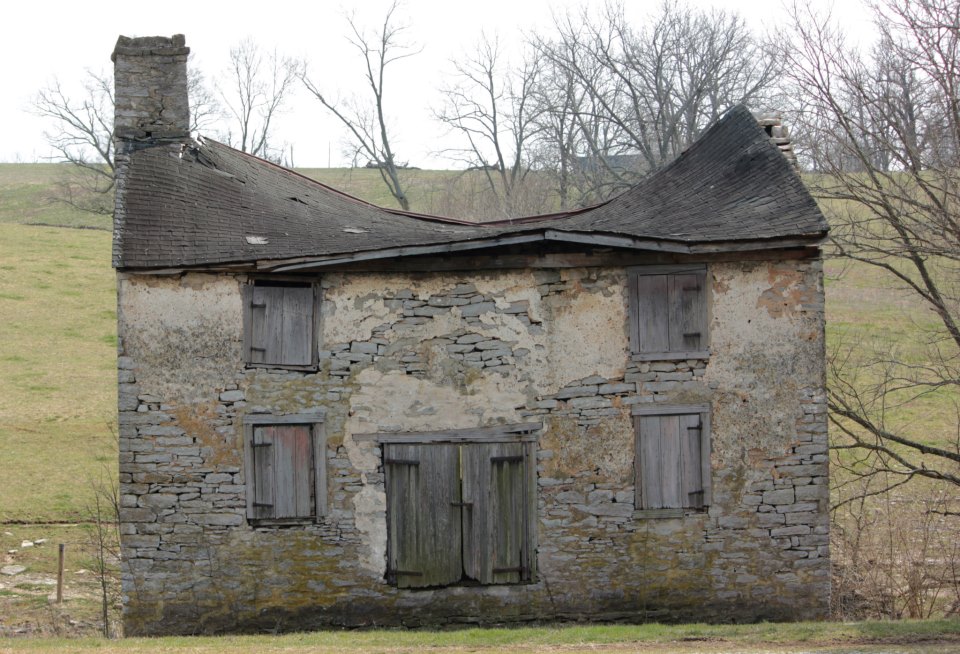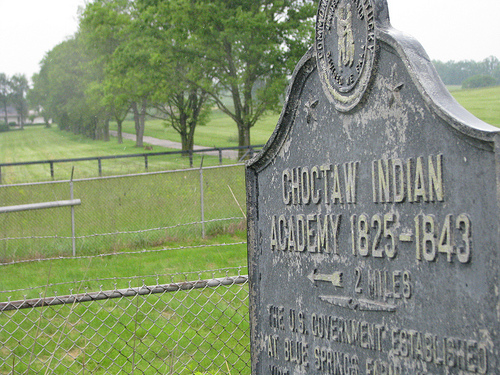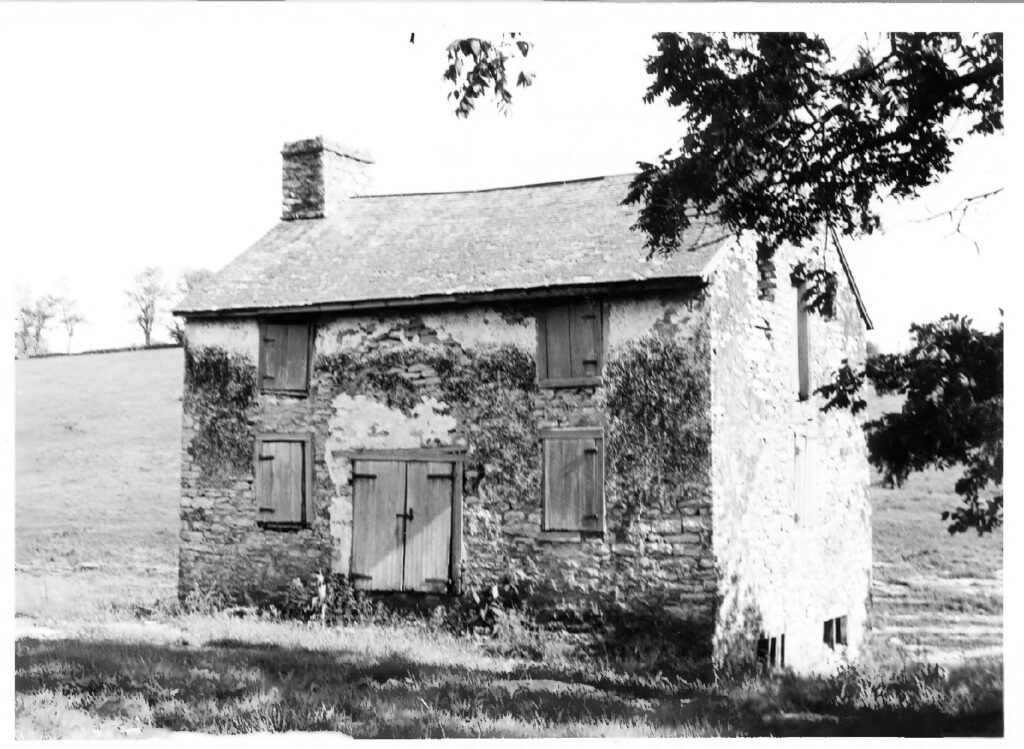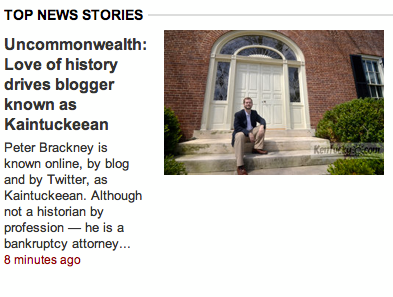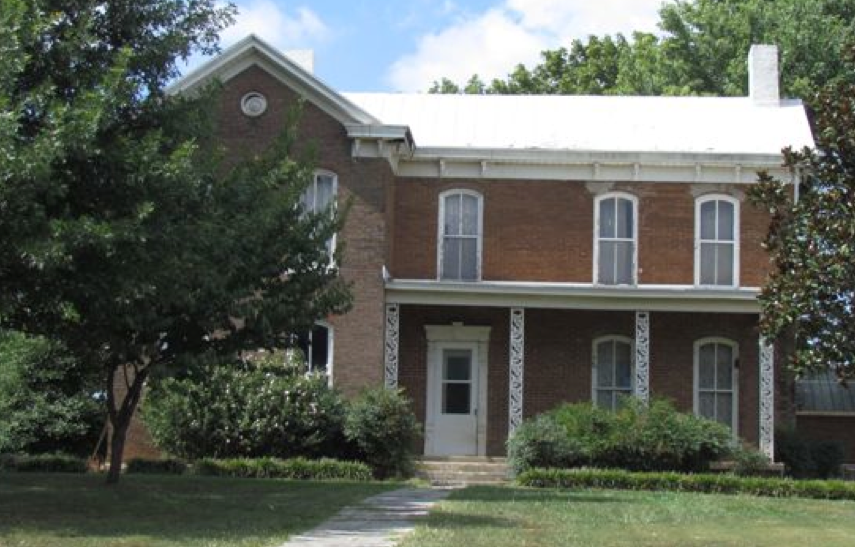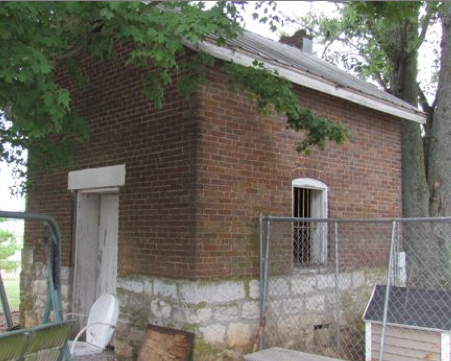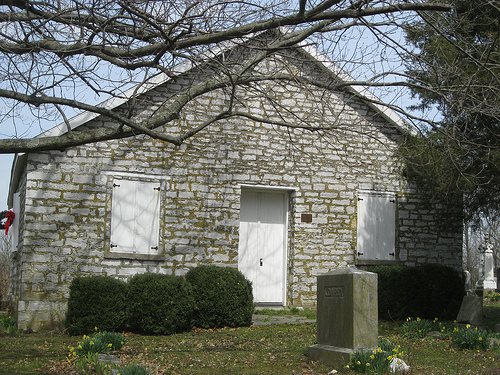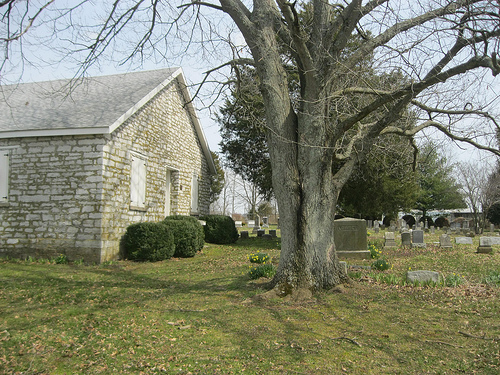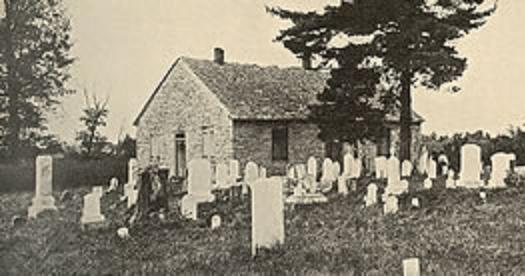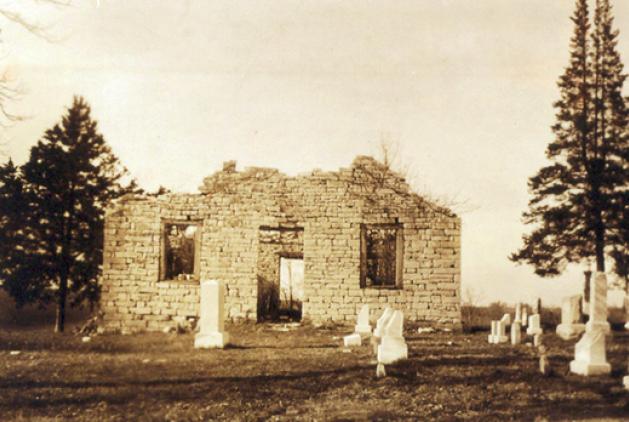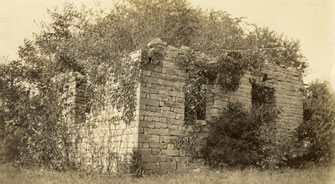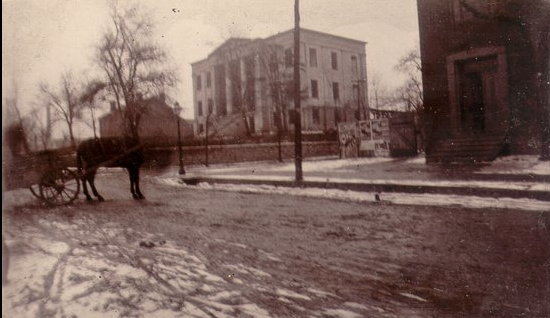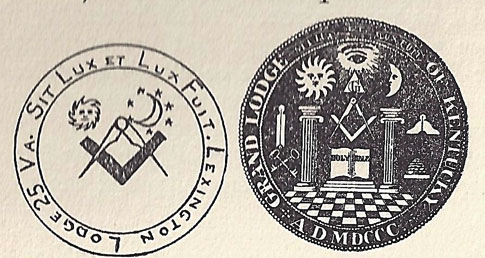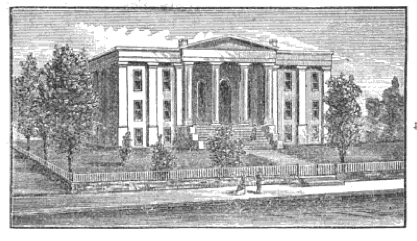This is part 1 in a two part series on Central Christian Church. This installment discusses the building and the church itself with some interesting tidbits, while Part 2 examines the great art found at Central. An earlier post on this site commented on the prayer garden at the church.
 |
| Gathered on the Steps of Central Christian Church – Lexington, Ky. |
In 1891, the Main Street Christian Church had an enrollment of 914. Too many for its space. A new location was found at the corner of Walnut and Short streets on the site of the derelict Masonic temple. The site was bought for $12,100 and the temple razed. At 5 p.m. on August 7, 1893, the cornerstone for the renamed Central Christian Church was laid atop the foundation of the old Masonic temple.
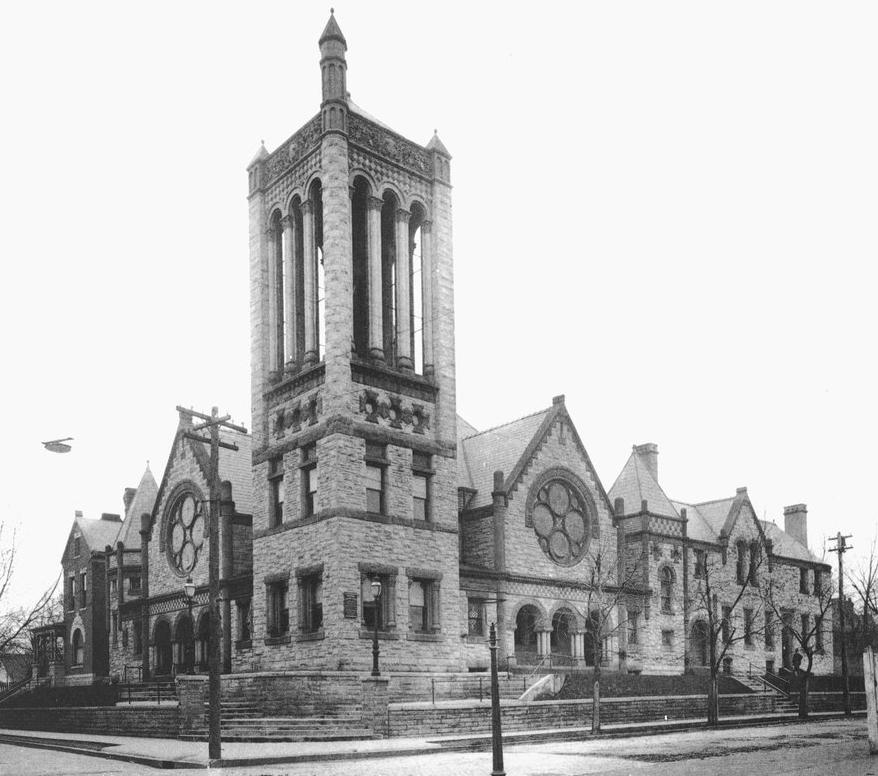 |
| Central Christian Church, ca. 1898. Source: NRHP. |
On July 22, 1894, the new church, constructed in the Richardsonian Romanesque style, was dedicated. The photo, at right, is the earliest known photo of Central Christian Church. Taken in 1898, the photo shows the building’s original entrance with an “elegant concrete walks and steps leading to and around the building [all] in bold relief.” The paired steps along both Walnut and Short stand in contrast to the single set of steps now along only Short Street (the change being made due to a 1930s fire, discussed below).
According to the National Register Application, Central is Lexington’s only major remaining Richardsonian Romanesque, describing the old courthouse as being stylistically provincial.
A Growing Church. Around 1911, the church began to find their space inadequate and enlargement was discussed. An education wing was formally dedicated in November 1915.
In 1933, a fire in the church caused significant damage to the sanctuary. The decision was made to reconfigure it to its present layout (save the chancel which was later enlarged); the new sanctuary was dedicated in September 1934. In the time between the fire and the dedication, the church found refuge for its weekly services at the Kentucky Theatre.
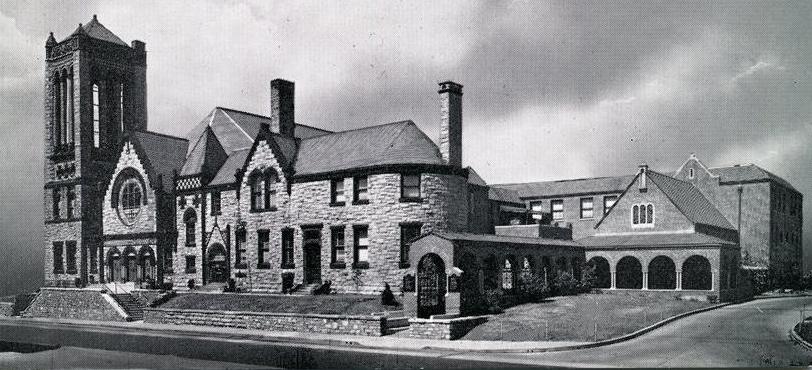 |
| Central Christian Church, ca. 1952. Source; NRHP. |
Another expansion in 1950 saw the demolition of the previously mentioned education wing in favor of an enlarge education wing as well as another sanctuary remodel and the construction of the Chapel of Memories. During this remodel, the congregation met in the auditorium at the old Henry Clay High School on East Main Street.
In 1954, “My Father’s Garden” was dedicated. It had been designed by Central’s Mrs. Wilson Case Lawwill with Louis Hillenmeyer serving as consulting landscape architect.
A final addition occurred in the early 2000s after Central purchased the old municipal building at the eastern end of Barr Street. Though once a beautiful structure, a flat façade added in the 1960s or 70s eliminated all beauty. The decision was made to raze the building and in its place, a new fellowship, youth and children center, and additional parking were made available for the growing church. It was a wise decision (particularly when compared to the alternative of abandoning the downtown site), and the church has since grown.
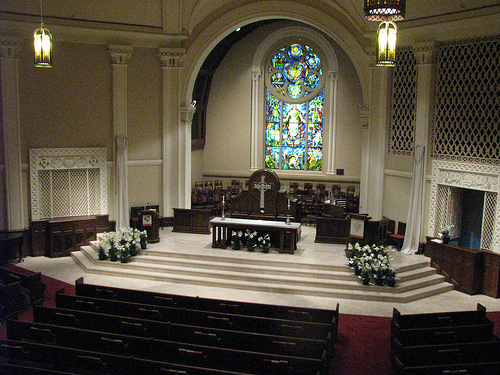 |
| Sanctuary of Central Christian Church – Lexington, Ky. |
Interesting Tales. A review of the old newspaper archives is always revealing, and a few stories related to Central Christian Church are of note. In 1902, “Patrolman James Dodd, while searching for a burglar, fell into the baptistry at Central Christian Church.” In 1905, “Central … votes to try individual communion cups for 30 days.” (They still use them.) In 1918, “Fifty stars on flag unveiled at Central Christian Church yesterday.” (I don’t understand this as we didn’t get a fiftieth (or forty-ninth) state until 1959. Ideas, anyone?) In March 1955, noted Disciple Ronald Reagan, in town as a movie star and program supervisor for General Electric Theater, delivered a “layman’s witness” to the congregation.
Evolution of Church Polity and Doctrine. Theologically, the church and its prior inceptions represent the oldest Disciples of Christ church in the denomination (though other churches are older, they began under other denominational brands before taking the Disciples identity). The church can be linked through history to a founding in 1816.
In its early years, the church was a hotbed for the community’s temperance movement. The annual meetings of the Kentucky Women’s Christian Temperance Union met almost annually at Central. On the opposite corner from the church, Tom Lyons had to go to court against the church in order to open his saloon, though he ultimately succeeded in 1897. A 1911 sermon series on “Vital Church Discipline” including a message entitled “Excommunicate the unworthy” which “created a profound impression and caused much favorable comment.” Though taking harsh posititions in the early years, both Central (and Disciples, generally) ultimately have softened their tone with regard to alcohol (recognizing that, after all, Jesus’ first miracle was turning water into wine) and other matters. In 2011, Central was recognized as an Open & Affirming congregation, showing a grand shift in social thought from its former days as a hotbed of WCTU activity.
A deTour to Remember. Though I’ve attended services several times at Central, I knew little of its history until our Blue Grass Trust deTour of the venue in early April 2013. The senior minister since 1995, Dr. Michael Mooty, led an adventurous crew through the church’s old boiler room with the exposed foundation from the old Masonic temple. It was joked that a dusty old chair in the boiler room was the a strict form of discipline for those talking during Sunday school or during services; it would seem this to be less strict, however, than that proposed in the 1911 sermon on “Excommunication: Withdrawal from the Church of Unworthy Members” preached by Rev. I. J. Spencer.
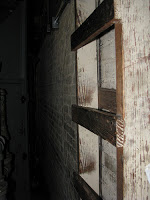
Our adventure continued through a portal off the balcony into a small mechanical room where we discovered a ladder mounted to the wall. Up we climbed to a small landing next to the magnificent stained glass rose window of Jesus that is visible from Martin Luther King Blvd, but not from the church’s interior since the 1933 fire and reconfiguration.
Another long ladder, fixed at about 30-45°, took the most adventurous from the landing to the platforms that span above the sanctuary. Though the spaces were tight, the sense of construction and the sentiment of history was strong in this surprising elements to the deTour.
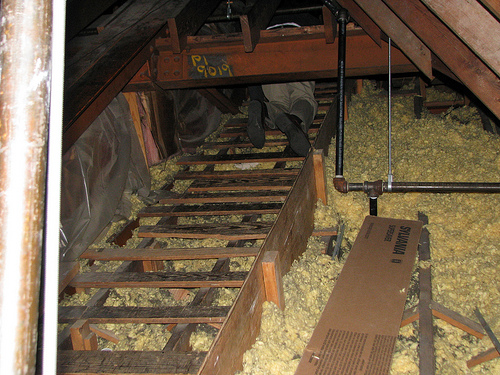 |
| Shimmying to the area atop the sanctuary |
An ajar light fixture above the sanctuary revealed the height from the ground below. Pictured through the opening in the light is the front pew of the church, upon which lay a few hymnals.
More photographs of Central Christian Church can be found on flickr.
Sources: Central Christian Church (DoC); Local.LexPubLib.org; NRHP; Ward Russell’s Church Life in the Bluegrass.
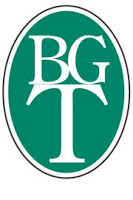
The Blue Grass Trust for Historic Preservation hosts a monthly deTour for young professionals (and the young-at-heart). On May 1, the group will meet at the Michler Florist on East Maxwell Street before visiting the Pope Villa. Join us on the first Wednesday of each month at 5:30 p.m. Learn more details about this exciting group on Facebook! You can also see Kaintuckeean write-ups on previous deTours by clicking here.

